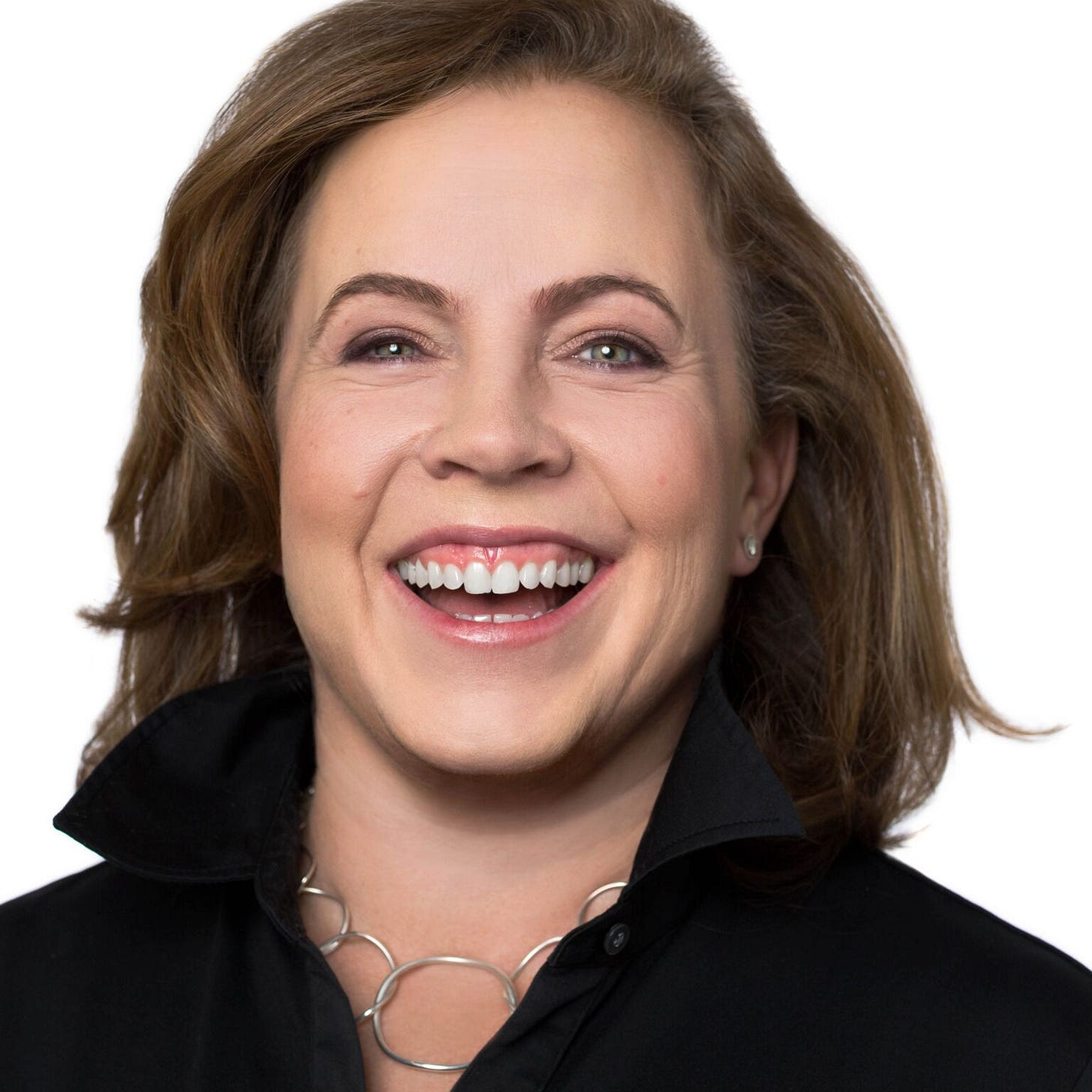Creative Cultures.
The Future Does Not Fit in the Containers of the Past. Edition 139.
In 2010 Kat Gordon was the rare creative director who was a woman.
3 percent of creative directors were women then and almost no one of color.
Kat decided to do something about it, and she began The 3% Movement built on the belief that Diversity=Creativity= Profitability.
Ten years later after a decade of conferences and other initiatives nearly 30 percent of creative directors were women and while there is still a way to go Kat re-imagined and re-invented the movement to be even more community and peer to peer driven.
Kat was the latest guest on What Next? where she discussed how to be “Creative about Creative Leadership”. The conversation is applicable to any company , individual or leader regardless who might be grappling with culture, creativity, combining AI with humans, the future of the workplace and much more.
Creative cultures are communities of belonging held up by trampolines of trust and creative entrepreneurship.
For decades companies have run as hierarchies.
The boss has been the parent and the employees the children.
It was important to gain favor with “dad” to earn rewards and to avoid punishment.
There was the “Sun-King’ at the center with some others in the royal court and most people were after thoughts on whom no light shined.
Changing demographics, new mindsets, enabling technology and distributed work is moving power from the center to the edge.
Stars can shine anywhere.
Creativity is increasingly about teamwork…note how entire teams take the stage at Cannes.
It is about community and a peer orientation where taking risks and speaking up and making mistakes are supported by trampolines of trust versus encrusted with jagged cliffs of death.
It requires Creative Entrepreneurs who build, create, sculpt and design not just new work but new organization and ways of working.
We not only have to re-think creativity but creatively re-think the creative organization.
Creative cultures like nature constantly evolve and adapt and constantly ingest, incorporate, and build on new technologies.
The 3% Movement changed the way they work, and their focus based on new technologies, new ways of working and new challenges.
Nature evolves. We are on the 16th operating system of the Apple iPhone. Culture changes.
Creativity by definition is about the new, the fresh, the insightful, the not done before!
Moving hearts and minds, building brands and telling stories have changed as we moved from word to audio to film to digital to multi-media.
Modern technology of prompt to words (GPT-4), prompt to image (DALL·E 2, Mid-Journey, Stable Diffusion) or prompt to video (Runway ML) are already being leveraged by the creative community to great effect in three ways:
a) Enhanced Productivity: The best creative talent is overworked and often burned out. These new technologies save time and become super assistants to them in eliminating much rote work. So many creatives will benefit from tools to help them become more productive.
b) Idea Catalysts: Now instead of staring at blank sheet of paper to start a project we have starter ideas, templates, first drafts and initial imagery to build on, add our unique value to, correct and enhance. New options will unleash new worlds of creativity.
c) New Paints and Canvases: Today Creatives have a canvas of the new immersive worlds of gaming driven by Unreal Engine, 3D frontiers of creativity where the real and virtual blend such as AR/VR as well as Mongrel Media where one can embed and combine commerce and video and much more, All of these are opening massive new universes for creativity which would not have been achievable or scalable without the new AI tools.
While change might be difficult, irrelevance is worse and talent will adapt and incorporate the new tools. Some jobs will go, and others will come but if “life is short and art is long”, creativity and the creative community will not just endure but thrive.
Companies that believe in diversity should also allow diverse ways of working.
The future of how work will be done in an unbundled and distributed era while operationally challenging is creatively exciting!
Creativity is connecting dots in new ways.
Ideas can occur anywhere whether it is on a walk, in a shower or while grocery shopping.
In person interaction can happen at conferences, restaurants, bars, learning events, training programs as well as the office.
It is time for companies to be brave and not go back to the safety of what was one tried and true.
Different people have different ways they prefer to work.
Different levels of expertise need different environments and support.
Instead of being like the Mandalorian and mandating “this is the way” leaders should follow the wise words of The Lawrence of Arabia’s recognizing that “nothing is written!” and experiment with different ways.
Companies that develop and integrate a portfolio of ways of working in ways that are balanced and unified but with built in flex are likely to attract, unleash and turbo-charge creativity.
They will create cultures of innovation and potentially gain long term competitive edges.
Diversity of working styles is also diversity and now is the time for companies to try different models and then offer some subset of choices to talent.
A significant number of future creative leaders will be introverts and empaths.
When Susan Cain wrote the best-selling book Quiet: The Power of Introverts in a World That Cannot Stop Talking she noted that half of the population described themselves as introverts.
But today in many industries 80 percent or more of the leaders are extroverts.
This is changing and recent developments will turbo-charge the rise of introverts and empaths so that the leadership population is more like the general population.
There are many reasons for this rise beginning with the rejection of toxic or bullying or command and control cultures. People today have just too many options to put up with nonsense. People leave bosses much more than they leave companies.
More importantly the world of unbundled and distributed work is introvert and empathy friendly since many office environments with their noise and “war-rooms” are not conducive to these personalities who prefer quiet and reflection to get things done.
More importantly in a world of Zoom everyone can be “seen”. The boss has the same square footage on Zoom as the lowest ranked employee There is no corner office equivalent of Zoom where someone’s tile is bigger (probably one reason some bosses want people back to the office).
The loud and the quiet are on equal footing.
People are more likely to speak up. Content quality, conversational ability, creativity inspired, and the community minded can thrive.
And in a world where the left-brain tasks will be increasingly done by machines there will be a great demand for empathy, emotion, and humanity to work in tandem with the machines.
Remember the Memorex ad that asked “Is it live or is it Memorex? and the orange juices that promise they are “100 percent pure squeezed”
Soon just liked hand crafted, artisanal, and traditional earns a premium price, we will be promised “100% human” while we wonder whether “Is it human or is it AI?”
For companies focused on diversity it is important to remember that diversity includes people with different personalities.
In a brave new world lets be creatively open, embrace diversity and be organizationally brave.
Photography by Michele Sons
Being Creative about Creative Leadership: Listen to the entire conversation with Kat Gordon wherever you listen to podcasts. Below is the Spotify Link:
Rishad Tobaccowala is an author, speaker, educator and advisor who helps people see, think and feel differently about growth. Growth of their business, their teams and themselves. For more about Rishad Tobaccowala click here.







Apologies in advance. This Sunday’s essay triggered me. Not because I have any issue with Kat Gordon’s “3% Movement” as an effort to address female under-representation in today’s modern ad agency industry. But, I do get upset by people like Kat who act as if the advertising industry began with the digital era. Come on. If you watch Mad Men, you know that the ad industry was always sexist, misogynistic and even abusive to women – just like all of American society. But, the advertising industry was always a rare and special industry for ambitious women who wanted to build a career because, in advertising, nothing trumps great creative ideas that win new business and keep current clients happy.
I am suspicious of the “3%” data point but I assume it is well documented. Many of the women in advertising were copy writers as opposed to art directors so, by not counting copy writers, maybe that is how we get to the 3% calculation. Or, maybe I am just old. Maybe women have left the ad agency industry in droves in the past decade for better industries. Who could blame them?
If we are going to indict the ad industry for not employing enough female talent, can we at least start the conversation by showing some respect for the many women who built and shaped the ad industry long before the digerati decided that the industry was born with them? Off the top of my head, here are a few of them:
Helen Lansdowne Resor: “A skin you love to touch,” she introduced sexual appeal into advertising. Erma Perham Proetz: inventor of the infomercial for PET evaporated milk. Shirley Polykoff: “Does she…or doesn’t she?” Shirley fundamentally changed how marketers think about cosmetic advertising. Bernice Fitz-Gibbon: "Nobody, but nobody, undersells Gimbels," – inventor of the advertorial in print ads and created the template for retail advertising. Jean Wade Rindlau: a great copy writer at BBDO when BBDO was the greatest creative department in the world. Jo Foxworth: author of “Boss Lady” which is still a primer for breaking into advertising – especially for women (Does Kat Gordon know about this book?). Janet L. Wolff: Janet was promoted to vice president and creative director at JWT at the youngest age ever at the time for men or women. Mary Wells Lawrence: founder of Wells Rich Greene. Patricia Martin: pretty much invented the in-house creative agency concept at Warner Lambert. Today’s concept of the CMO has historical roots that wind back to Pat Martin. Andrea Alstrup (surely you know her well): Andrea built on Pat Martin’s model to create the in-house advertising agency at Johnson & Johnson. Charlotte Beers: Charlotte is the only executive, male or female, to serve as chairman of two of the top-10 worldwide advertising agencies: JWT and Ogilvy & Mather. Gerry Laybourne: Founder of Oxygen Media. Not an ad executive but Gerry changed marketing to young women by making all body types acceptable and valuable. Dove, for example, built on Gerry’s creative leadership. Laurel Cutler: Laurel was one of the great creative directors of all time who is known for creating career paths for female creative directors (hello Kat, do you know her?). Ironically, Laurel won the ad industry’s “Man of the Year Award” in 1995. Tere A. Zubizarreta: Tere built her career at McCann and then founded Zubi Advertising – her leadership created what we would all come to call “Hispanic advertising” in the USA. Shelly Lazarus: Appropriate to end with Shelly because she came up when David Ogilvy would walk the halls looking for the best damned talent he could find, male or female did not matter. Shelly, of course, became CEO and Chairman of Ogilvy & Mather.